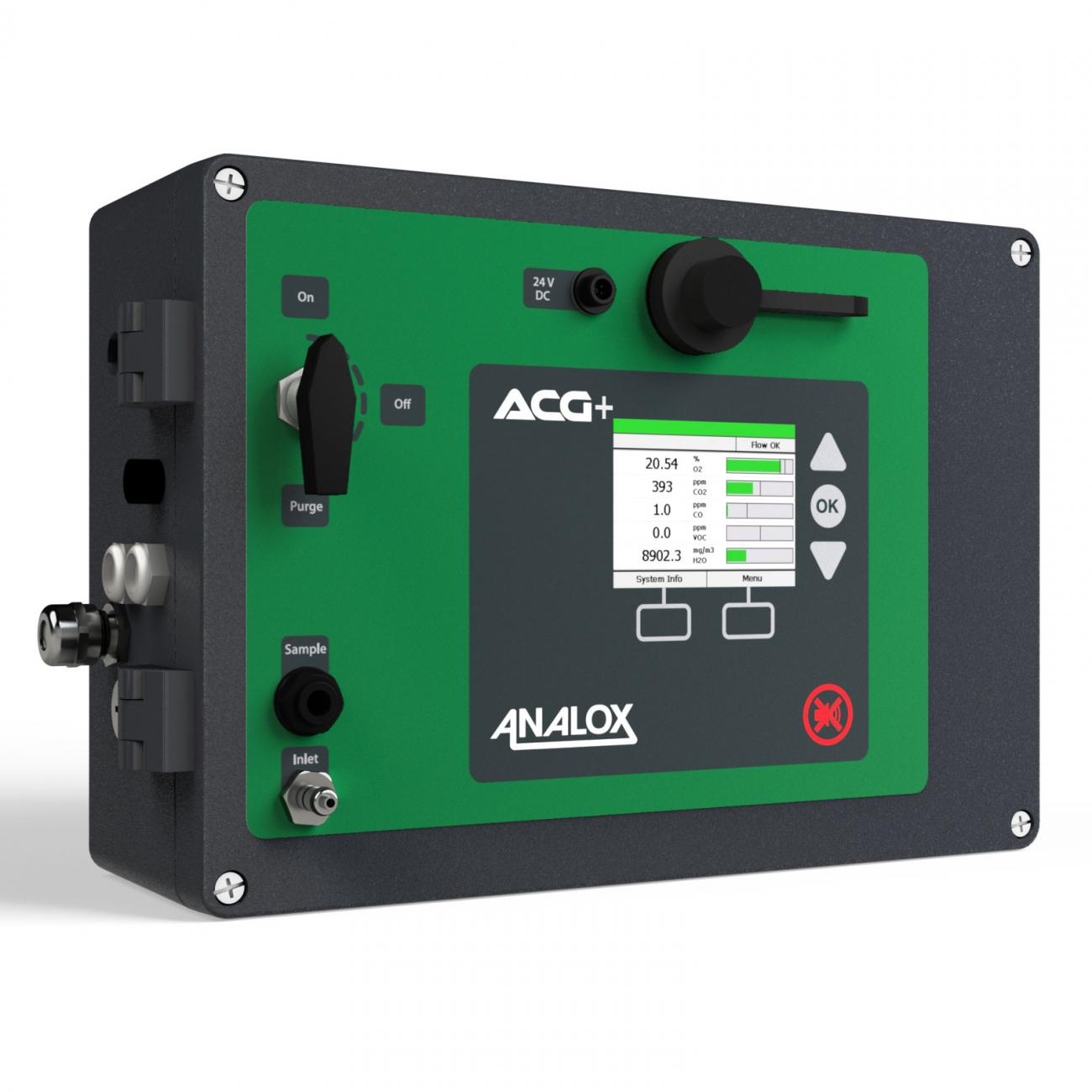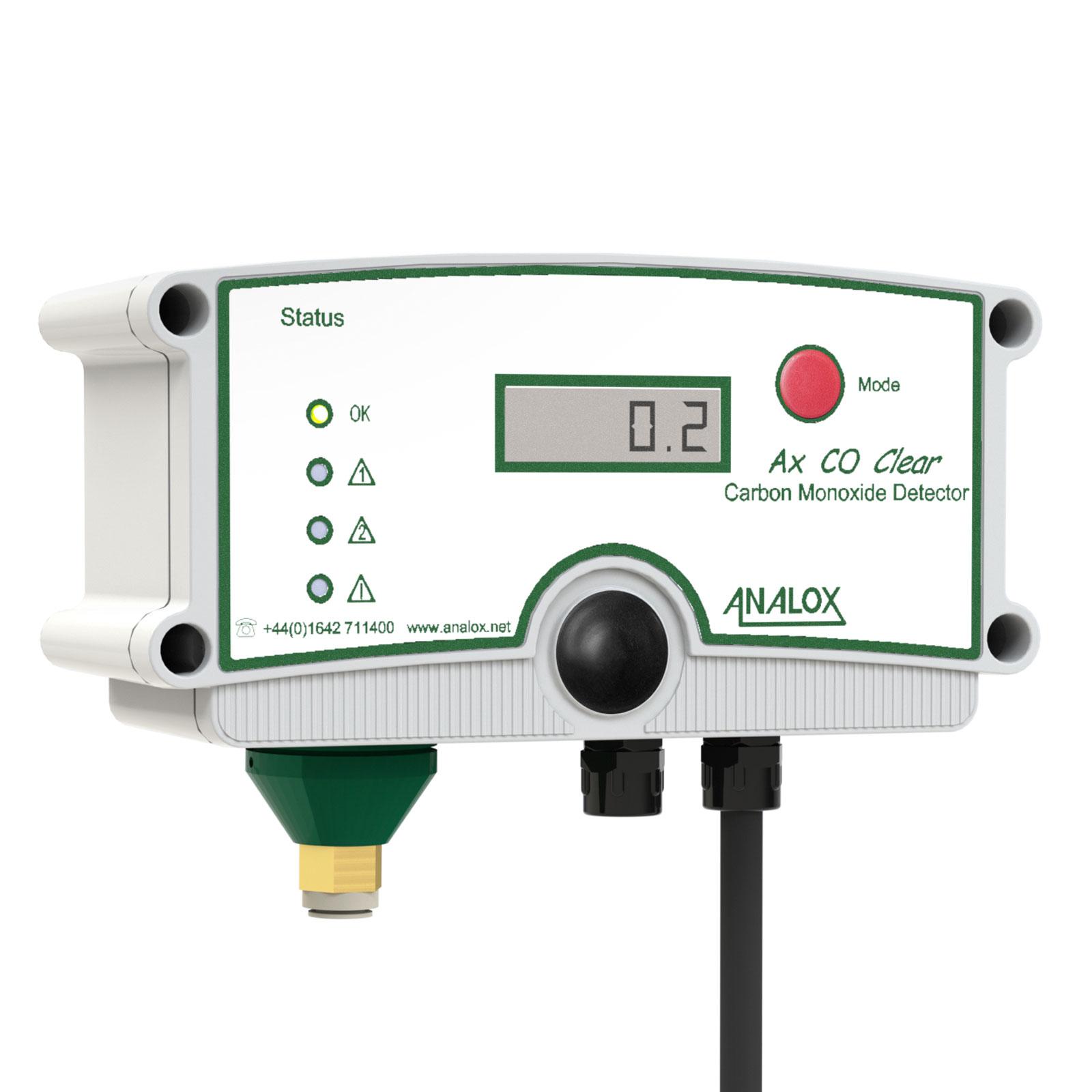Breathing Air
Breathing air applications include: firefighting, damage control, diving, confined space entry, spray painting, sandblasting and HAZMAT.
Some applications will use air fed masks with a direct supply from the compressor and other applications will utilize breathing air cylinders that have been pre-filled with the compressor.
In both instances, the quality of the breathing air is critical as this air is used to support life. The air must be clean and contaminant-free in-line with legislation such as EN12021, OSHA, CGA and CSA.
Regulations require breathing air compressor users to take accurate measurements of oxygen (O2), carbon dioxide (CO2), carbon monoxide (CO), volatile organic compounds (VOC’s) and dewpoint to ensure the air is safe to breathe.

A multi-gas analyzer to measure: oxygen (O2), carbon dioxide (CO2), carbon monoxide (CO), Volatile Organic Compounds (VOC’s) and Dew Point in compressed air. The unit can be wall mounted or used as a portable system.
The CO Clear is designed to be installed inline on heliox or breathing air compressor arrangements to warn the operator if there is a potential contamination of carbon monoxide before it reaches the user.
Process Air
Compressed air is also vital in process applications such as: sounding alarms and whistles onboard frigates, firing missiles, and for starting a ship’s engine.
The user needs the sample to be clean and reliable to carry out these tasks.
In both breathing air and non-breathing air applications, accurate analysis can also assist with advising of the health of a compressor and when maintenance is required.
For example, if an analyzer is showing a high dewpoint reading, it is likely there has been a seal failure and the compressor requires a new part and a service. This early indication can help prevent contaminated air from being used, reduce downtime and allow for swift maintenance and continued effective operation.
Analox analyzers deliver you continuous assurance of the quality of your compressor and your compressed breathing air.

A multi-gas analyzer to measure: oxygen (O2), carbon dioxide (CO2), carbon monoxide (CO), Volatile Organic Compounds (VOC’s) and Dew Point in compressed air. The unit can be wall mounted or used as a portable system.
The CO Clear is designed to be installed inline on heliox or breathing air compressor arrangements to warn the operator if there is a potential contamination of carbon monoxide before it reaches the user.
How do Breathing Air Compressors Work?
Analox has supplied compressor monitors since the 1980s, our products help to keep your employees safe and your breathing equipment free from any contamination.
Breathing air compressors work by forcing air into a container through a series of mechanisms that pressurize, cool, and separate moisture over and over. Filtering the air ensures that it is safe to breathe and free from contaminants.
Breathing air compressors differ from other air compressors as the gas produced is specifically used by people for breathing.
Breathing air compressors vs air compressors
It is important to note the danger of using regular air compressors for breathing air, as the air produced is very likely to be contaminated and will cause harm to those that use it. When air compressors pressurize the ambient air, they also concentrate the contaminants that are already present. The compressor itself can also have contaminants such as water vapor and oil. If there is no filtration system like there is in breathing air compressors, these contaminants will remain in the pressurized air in the cylinders or enter directly in air-fed masks.
What Precautions Should be Taken When Using Compressed Breathing Air?
Even though breathing air compressors can filter out contaminants there is still a danger of them getting through into the cylinders or directly into an air-fed mask.
- Malfunctioning compressors can produce unsafe levels of carbon monoxide and carbon dioxide.
- Breathing air filtration can fail, causing contamination to be present in the air.
- The compressor air intake can get polluted by airborne contamination. This can come from nearby processes and vehicle exhaust fumes. This does not get removed by standard breathing air filtration.
- Insufficient airflow or pressure to the respiratory protective equipment (RPE) reduces the protection factor and can expose the user to external contaminants.
There are currently 3 ways to check for contaminants within compressed breathing air:
- Colorimetric tubes, which are cumbersome and prone to potential human error when analyzing tube readings.
- Offsite test houses, which are costly and do not provide real-time data. A failure within the compressor may not be picked up before a sample reading is sent off.
- Gas analyzers, offering real-time measurements of contaminants from a breathing air compressor.
However, relying on colorimetric tubes and offsite test houses or lab testing could have fatal consequences as neither of these methods check continuously or in real-time.
For those who use pre-filled air cylinders such as firefighters, divers, and hazmat, colorimetric tubes, and offsite testing mean that you are solely reliant on the cylinder that you have chosen to test. This may come back with a negative result, which means that you can only say for certain that the cylinder that was tested is safe, but not the others. If it came back positive for contaminants, you would then need to dump all the compressed air from that filling session and clean all the cylinders. A costly job in both time and money.
For those who breathe the air directly from the compressor, such as industrial spray painters, both of those tests mean that you are then reliant on a past test. Even if the test is negative for contaminants, the breathing air compressor may become compromised at any time from the moment after the test was administered.
This is where Analox’s engineers came in, they noticed this problem and designed two gas analyzers that would help limit the risk of using contaminated breathing air.
The ACG+ and the CO Clear are both fitted to the compressor output BEFORE the air gets to the cylinders and BEFORE the air reaches the worker who is breathing directly from the compressor using an air-red mask. If either monitor senses a contaminant, it will shut down the compressor. Stopping the contaminated air from reaching the cylinder or the worker using an air-fed mask. Saving lives.
Some breathing air compressors have sensors already fitted, but they tend to not have all the sensors that are required. Please get in touch with Analox today to check which analyzer would be right for your compressor.
ACG+, your multi-gas compressor analyzer
The ACG+ is the big allrounder when it comes to monitoring for contaminants. It can monitor; oxygen (O2), carbon dioxide (CO2), carbon monoxide (CO), volatile organic compounds (VOCs), and Dewpoint. Nothing gets past it, keeping your team safe and the air you breathe clean.
The ACG+ also allows you to meet and achieve EN12021, CGA, CSA, and OSHA compliance.
There is no need to test with tubes or undergo expensive and time-consuming lab analysis, the ACG+ can run continuously throughout the day and offer real-time results on the quality of your breathing air. With a built-in purge system allowing for accurate measurements in minutes, you have full traceability of your air quality and compliance.
It can be portable or wall-mounted depending on your needs and it’s been designed to be user-maintained, which over time offers a low cost of ownership to compressor service.
For more information on the ACG+ visit the product page.
CO Clear
Designed to meet the needs of the SCUBA community, the CO Clear is a wall-mounted analyzer produced to specifically monitor for carbon monoxide (CO).
Installed inline on the breathing air compressor the CO Clear warns the operator if there is potential contamination of carbon monoxide before it reaches the user.
Offering both audible and visual alarm warnings, a 4-20mA can be fitted on the CO Clear to allow the breathing air compressor to be shut down should a leak be detected.
For more information on the CO Clear visit the product page,
What jobs require compressed breathing air?
Breathing air compressors can be used in a wide range of industries and sectors, from commercial platforms to defense. If breathing air is required there is a breathing air compressor producing it.
There are two main applications of breathing air, one is pre-filled breathing air cylinders that are used for portable use, such as
- Firefighting
- Damage control
- Diving (SCUBA)
- Confined space entry
- Sandblasting
- Hazmat
The second application uses breathing air compressors to send breathing air directly to the worker through air-fed masks, it is more important to use continuous monitoring with this type of application as the air gets fed directly to the person who needs it. If there is a fault in the compressor, you won’t know about it until it is too late. Jobs that require air-fed masks are
- Spray painting
- Welding
- Labs
Common Compressed Air Contaminants
Potential contaminants within breathing air can have a disastrous effect on the user should they be inhaled. Smaller volumes can lead to reduced performance costing the company time and money. Higher levels could potentially cost lives. So what are potential contaminants in compressed breathing air?
CO2 is a toxic gas. As little as 0.1% of CO2 in the air can affect the human body. CO2 can cause you to breathe faster and deeper which forces more toxins into your system quickly. Once CO2 builds up in the body, you start to lose the ability to think clearly and then potentially lose consciousness.
CO is a poisonous, tasteless, and odorless gas and can be fatal when large amounts are breathed in. Early warning signs of CO poisoning include headaches, sore eyes, and a runny nose. Following that, you may feel dizzy, confused, and achy. Finally, with extreme exposure, you may suffer nervous system damage, and fall into a coma.
Volatile Organic Compounds (VOCs)
Breathing in VOCs can be very dangerous, mainly due to the number of different types of VOCs there are and the effect that they have on the body. Breathing in VOCs can include symptoms such as eye, ear and nose irritation, difficulty breathing, and nausea, they can also damage the nervous system and other organs.
Water Vapor/Dew Point
This can lead to system corrosion or potentially an air blockage which can push dangerous particles into the breathing air.
When it comes to deciding which product is right to choose, think about what contaminants you need to monitor. If CO is the only contaminant, then go for the CO Clear. But if any of the other contaminants are a concern, choose the ACG+, it can monitor for all contaminants, even the ones you didn’t think you needed to look out for.
Expert support
Analox has a committed support team who can offer assistance and training to you and your employees.
We have dedicated Account Managers who can advise you on which analyzer is best for your specific requirements, and we also have a Support Team who can provide knowledge and training to enhance your employee’s capabilities with online and hands-on training.
Read more here on the support team and what training is available to you.
Subscribe to our Analox Newsletter!
Gain exclusive access to the latest news, insights, upcoming product releases in gas safety and efficiency. Be the first to know about our innovative solutions, upcoming events, and expert perspectives. Sign up today!
Contact Us to Find Out More
Our Account Managers are ready to assist you in deciding on the best-compressed breathing air analyzer for your requirements
Contact them today for further assistance and support.
Fun Fact
Did you know that thunder is actually the sound of compressed air exploding.

